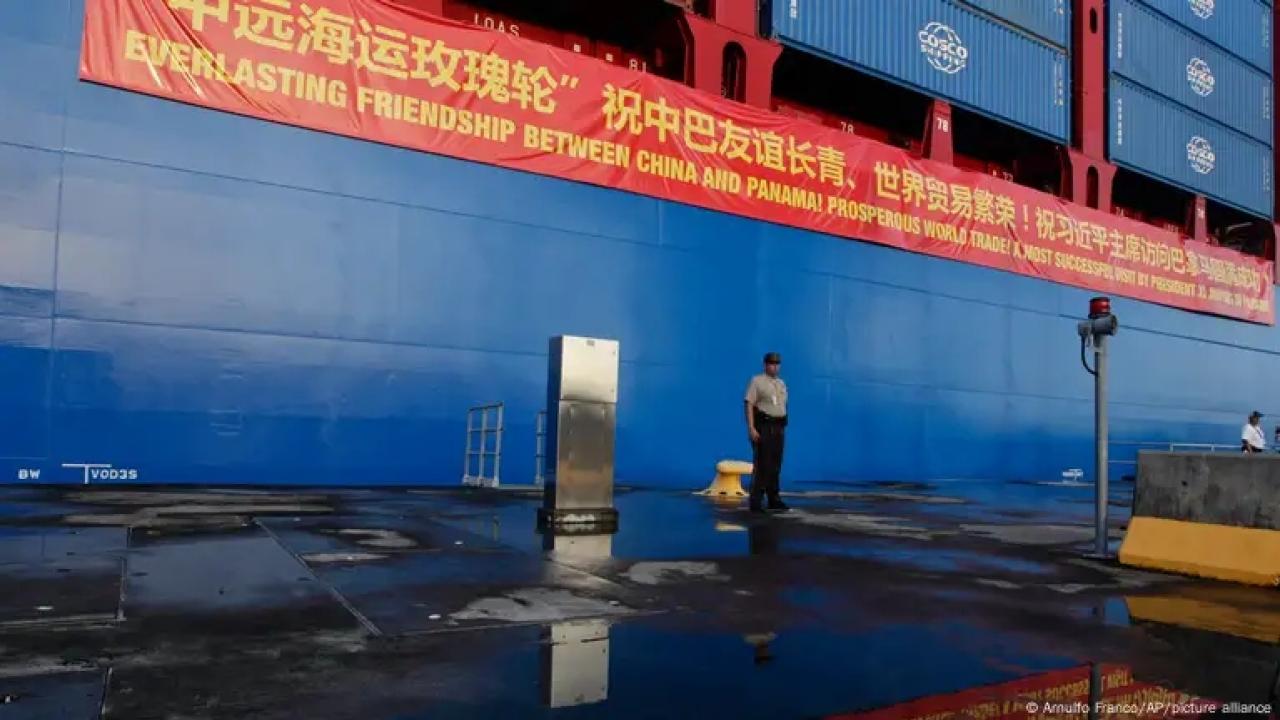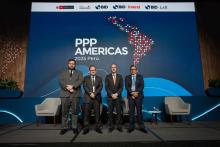
Chinese participation in port activities is not limited to the strategic Panama Canal or the Chancay Megaport, but extends to a global level.
As the new US Secretary of State, Marco Rubio, visits Panama as part of a tour he will undertake through several countries in the region, the topic of the canal cannot be ignored.
President Donald Trump had already made this a topic of concern before his return to the White House, with his declared intention to regain control of the interoceanic waterway. The Washington leader complains of excessive tariffs and, above all, of the control that, in his view, China exercises over the canal. Something that, on the Panamanian side, has repeatedly refuted.
What is in Chinese hands is the operation of two of the five ports in the area: Balboa, on the Pacific, and Cristóbal, on the Atlantic, both operated by subsidiaries of CK Hutchison Holdings, a company based in Hong Kong.
"OBLIGATION TO INFORM BEIJING"
"They are concessions and, although they are governed by Panamanian law, there are a number of items that the Chinese imposed as conditions, which Panama accepted. For example, it is very difficult for Panamanians to enter these terminals to see what they are doing. And these terminals, which are also very close to a military base, have the potential to spy," Agustín Barletti, author of the book "El hambre del dragón: el plan de china para comerse el mundo," published in 2022, told DW.
The Argentine writer also considers another aspect to be very important: "In the structure of the Panama Canal, there is an Advisory Assembly and, as vice president of this assembly, there is the company Cosco Shipping. It is a Chinese state-owned shipping company, so everything that is discussed in this advisory assembly ends up being known by Beijing." And he adds: "Any Chinese company that is operating outside China is obliged to inform Beijing of everything that happens, so this place is key."
China's involvement in port activities is not limited to the strategic Panama Canal, but extends globally.
"Over the past 20 years, China has increased its maritime connections by more than 60 percent. Today, it is the best-connected country in the world by sea. It has 95 ports around the world. And six of them are among the top 10 largest in the world," Barletti notes.
A NODE IN THE CARIBBEAN
In Latin America, he mentions the case of Mexico, where they have terminals in the ports of Manzanillo, Ensenada, Lázaro Cárdenas and Veracruz. In the Caribbean, there is also a significant Chinese presence.
"In the Bahamas, there is Freeport, which is a very deepwater port. That's why there are many large ships that come to Freeport, unload a lot of containers and then take them on smaller ships to Miami and other places," he explains. He also mentions Kingston, in Jamaica, where "they also have terminals, so two of the most important ports in the Caribbean have a Chinese presence."
The Caribbean could be a strategic point for cargo movement. "The Caribbean has also been seen as a possible hub (logistics center) before crossing the Panama Canal," Daniella De Luca, head of the program at the School of International Business at the University of Valparaiso in Chile, told DW.
"The proposal was to create large ports in the Caribbean, to facilitate the transfer to smaller ships, so that crossing the canal would be more economical." An idea that could also be useful in view of the problems that Panama has had due to the lack of water to inject into the locks, which makes the crossing of heavily loaded ships more complex.
THE CHINESE STAR OF CHANCAY
In South America, the Chinese network of influence includes the port of Paranaguá in Brazil, in which China Merchants Port Holdings (CMPort), one of the largest container terminal operators in the world, is a shareholder. And the port of Chancay, built by the shipping company Cosco in Peru. Barletti considers this a scandal. "Peruvians think that China built a port for Peru, but no, China built a port in Peru, which is very different," he says.
José Antonio Pejovés, a lawyer specialising in maritime law and a professor at the University of Lima, does not see it that way. "They cannot do whatever they want, because they are subject to the rules of the national port system," he says. Instead, he speaks of soft power .
"It is part of the Chinese project of the 'New Silk Road', it is a commercial presence. China has very well identified it as a State policy. They are not just ports. They are building roads and other types of transport infrastructure, as well as investments in manufacturing industry or in agricultural areas," he says. But he points out that it is a commercial port.
He also noted that Chancay is not the first port in Peru in Chinese hands.
"China has been operating the port of San Juan de Marcona for 20 years, because when the mining company Hierro Perú was privatised, the package included a port terminal." It was acquired by the state-owned Shougang Group. "If they wanted to put an aircraft carrier there, they could do so. It is a terminal, a dock, but that part of the coast has a natural depth of almost 25 metres. There is no need to dredge, there is no need to do anything," he explains.
SHIPPING IMPACT
China is also present in several corporate ports in Latin America. For example, in Argentina, the state-owned China National Cereals, Oil & Foodstuffs (COFCO) bought the majority of the shares of the grain companies Nidera and Noble, which gave it access to their terminals on the Paraná River. In Buenos Aires, however, Chinese operators withdrew when a concession expired and was not renewed at Terminal 5, Barletti said.
Beyond the discussion about the intentions of geostrategic control or espionage attributed to Beijing, through its shipping companies and even port equipment, the truth is that the network that China is weaving could have a commercial impact in the region.
Referring to Chancay, operated by the company Cosco, Daniella de Luca explains: "As we know little about the financial operation, there is the possibility that there will be a subsidy and that these freight rates will drop significantly. And these very low rates would encourage people to move cargo on that route with Cosco, leaving aside the other companies. That is a current fear at the shipping level."










